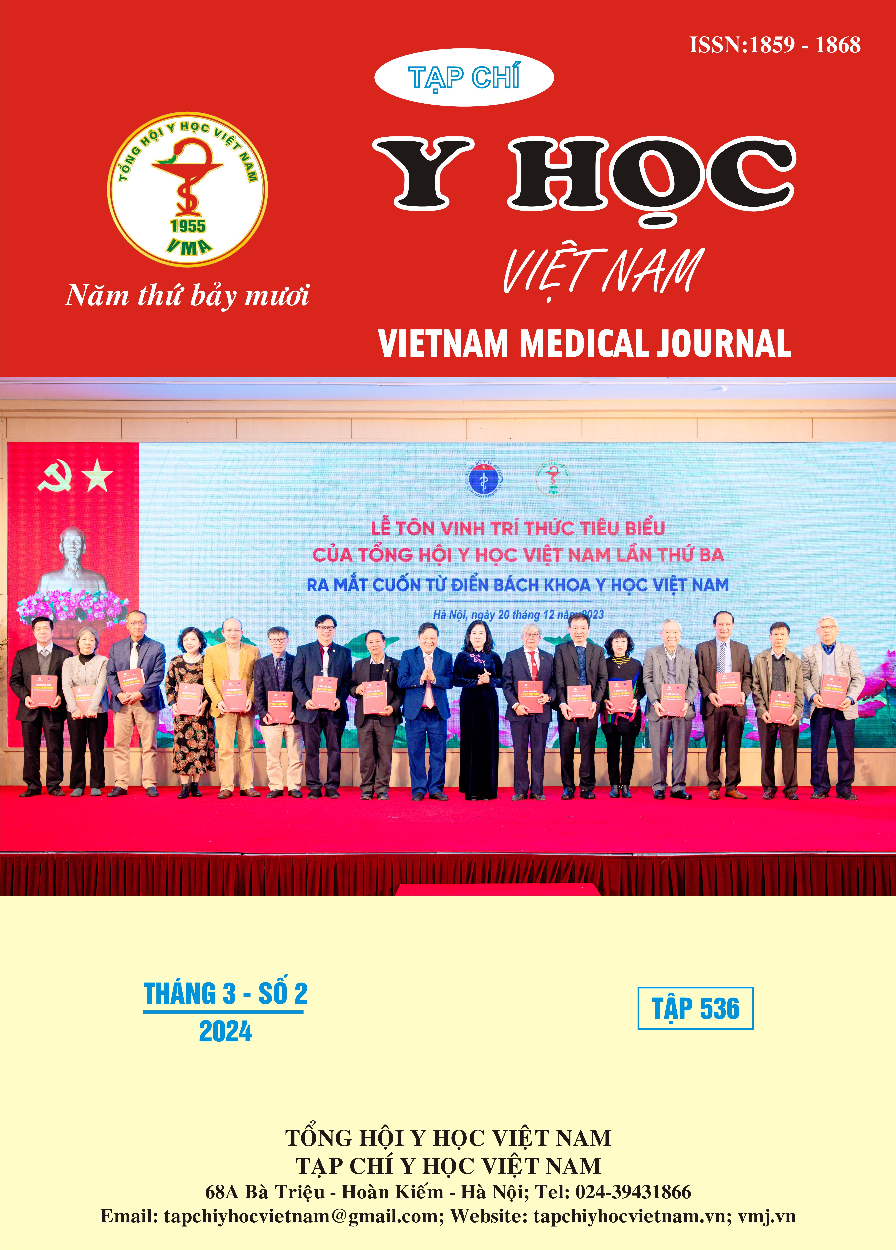STUDY ON SOME CLINICAL, X-RAYTIC, HISTOPATHOLOGICAL AND IMMUNOHISTOCHEMICAL FEATURES OF PULMONARY NEUROENDORCIC TUMORS
Main Article Content
Abstract
Objective: Determine the histopathological types of cervical cancer according to the WHO - 2017 classification and compare with some clinical and X-ray characteristics. Subjects and methods: cross-sectional descriptive study, purposive sampling. Results: Among lung non-abnormalities, non-lung lung cancer accounts for the highest rate of 84%, followed by 14% non-lung lung cancer and rarely occurs G1 and G2 non-cancerous lung cancer. G3 non-cancerous and mixed types are not encountered. In which the age group most commonly found with G1 and G2 NSCLC is under 40 years old, NSCLC is commonly found in people over 60 years old (accounting for 56%). The most common symptom of NSCLC is chest pain (accounting for 80.9%), followed by cough (accounting for 65.5%), the least common symptom is coughing up blood (7.1%). Cough (85.7%). UBCV and NSCLC are common in the upper lobe of the right lung with rates of 31% and 35.7%, respectively. Tumor size in NSCLC and NSCLC is usually over 3cm (accounting for 66.7%) while G1 NSCLC is less than 3cm. Conclusion: Most lung cancers are poorly differentiated neuroendocrine tumors (98%) and the most common are NSCLC (84%), rarely G1 and G2 NSCLC. No G3 and mixed type UTKNT encountered. Among the types of lung cancer, G1 and G2 lung cancer are common in young people <40 years old. NSCLC is common in patients over 60 years old (accounting for 56%). There is no clinical and radiological difference between NSCLC and NSCLC.
Article Details
References
2. Langfort R., Rudziński P., and Burakowska B. (2010). Pulmonary neuroendocrine tumors. The spectrum of histologic subtypes and current concept on diagnosis and treatment. Pneumonol Alergol Pol, 78(1), 33–46.
3. Hoàng Đình Chân (1992). Nghiên cứu kết quả điều trị phẫu thuật ung thư phế quản theo các tip mô bệnh và các giai đoạn lâm sàng, Đại học Y Hà Nội.
4. Oka N., Kasajima A., Konukiewitz B. et al. (2019). Classification and prognostic stratification of bronchopulmonary neuroendocrine neoplasms. Neuroendocrinology.
5. Bùi Cao Cường (2016). Nghiên cứu một số đặc điểm lâm sàng, cận lâm sàng, mô bệnh học và hoá mô miễn dịch ung thư phổi tế bào nhỏ, luận văn thạc sỹ y học, Đại học Y Hà Nội.
6. Dương Văn Huỳ (2014). Nghiên cứu mô bệnh học các u thần kinh nội tiết của phổi tại bệnh viện K, Khoá luận tốt nghiệp, Đại học Y Hà Nội.
7. Trần Thị Thuần (2014). Đặc điểm lâm sàng, cận lâm sàng và tế bào học dịch rửa phế quản ở bệnh nhân ung thư phổi nguyên phát tại trung tâm hô hấp bệnh viện bạch mai, Y Hà Nội.
8. Chong S., Lee K.S., Chung M.J. et al. (2006). Neuroendocrine tumors of the lung: clinical, pathologic, and imaging findings. Radiogr Rev Publ Radiol Soc N Am Inc, 26(1), 41–57; discussion 57-58.
9. Kasajima A., Konukiewitz B., Oka N. et al. (2019). Clinicopathological Profiling of Lung Carcinoids with a Ki67 Index > 20. Neuroendocrinology, 108(2), 109–120.
10. Garg R., Bal A., Das A. et al. (2019). Proliferation Marker (Ki67) in Sub-Categorization of Neuroendocrine Tumours of the Lung. Turk Patoloji Derg, 35(1), 15–21.


